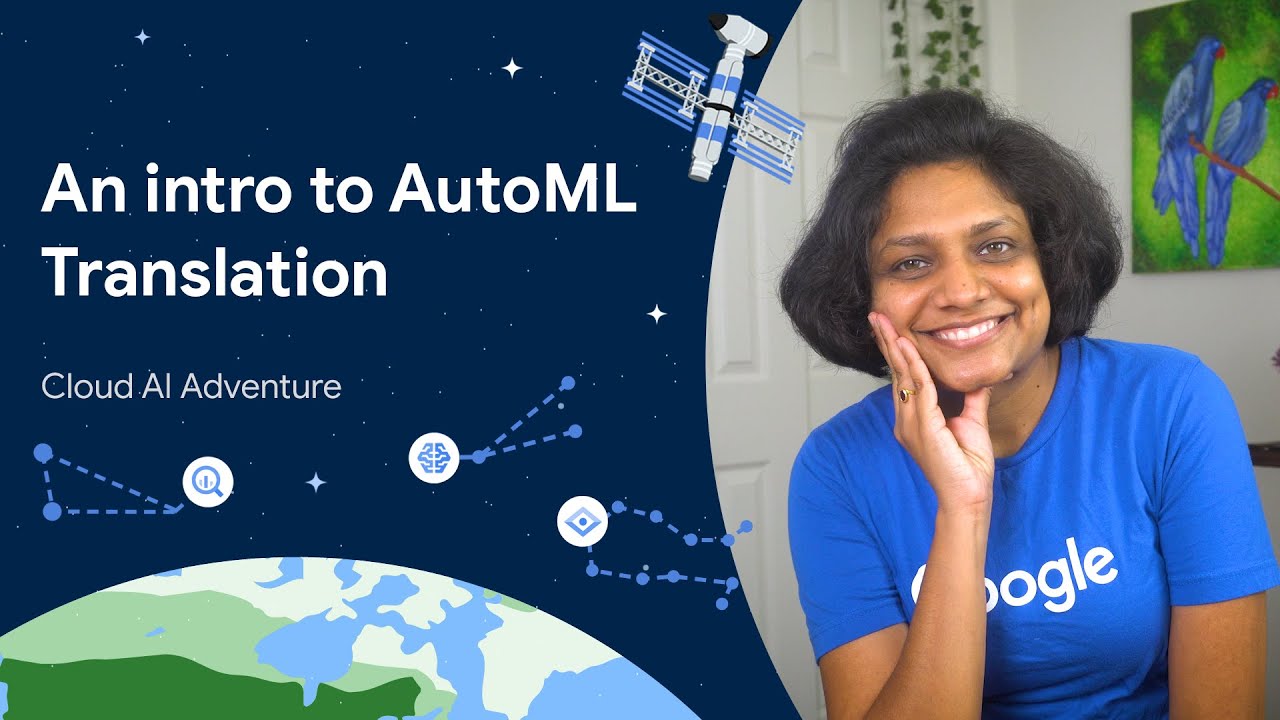In Translation and proofreading
What is AutoML Translation? - read the full article about machine translation, Translation and proofreading and from Google Cloud Tech on Qualified.One

Youtube Blogger

PRIYANKA VERGADIA: Can I get some milk and sugar with my coffee please? SPEAKER: [SPEAKING SPANISH] PRIYANKA VERGADIA: Now that is some awesome coffee.
Translation is fun, isnt it? Well, stay with me as we explore custom translation models to power global apps.
Welcome to "AI Adventures" where we explore the art, science, and tools of machine learning.
Im Priyanka Vergadia, and today we are talking about custom translation models.
I was in Peru last year, which is mostly a Spanish-speaking country.
I do not speak Spanish, so I had to rely on Google Translate for even minor things such as can I get milk in my coffee, please? Now imagine if I was to go live and work in Peru for a year, helping developers implement machine learning and AI maybe.
The machine-learning field has unique terms and references to mathematical concepts which might not be captured in a standard dictionary.
For a custom use case like this, the standard Translation API may not be sufficient.
To provide the best experience, I would need to make sure things dont get lost in translation, and that would need a custom model specific to the ML and AI terminologies to communicate effectively with the Spanish-speaking developers.
This is probably true in your field as well.
Thats where AutoML Translation comes to rescue.
AutoML Translation lets you create your own custom translation models so that translation queries return results specific to your domain.
To understand this further, lets take another example.
Imagine you run a financial-reporting purpose that has an opportunity to expand to Peru, India, and France.
Those markets require that your time-sensitive financial documents are translated in real time.
AutoML Translation can help you automate the translation job for over a hundred language pairs in a scalable way, allowing you to enter those newer markets quickly.
Now, you might be asking yourself, when would I use AutoML over the Translation API? Translation API does a great job with general-purpose text, and with advanced glossary features you can take it further by providing a dictionary of words or phrases.
I covered this in detail in the previous episode linked below.
But there are times when you dont have a glossary or know exactly which word translations you want to control.
AutoML Translation shines in those cases in that last mile between generic translation tasks and specific niche vocabularies.
Whats amazing is AutoMLs custom model is built on top of the generic Translation API model for domain-specific content that matters to you.
Now lets say youve established that you need a custom translation model.
How would you create one? Well, we will just prepare and source the data and feed it into AutoML Translation.
It then trains, deploys, and serves the model, and provides us with an easy interface to evaluate and test it.
It creates an easy-to-use REST API to make predictions.
High-quality data is critical ingredient in creating an effective AutoML Translation model.
As a general best practice, make sure your sentence pairs do the best-possible job of covering the vocabulary, usage, and grammatical quirks of your industry or the area of focus.
For more details, Ive included a link in the description for some best practices of how to assess and source your data.
Once we have the data, we head over to the AutoML Translation UI and create the data set by selecting the source and target language.
Upload the files from your computer, and select the folder in Cloud Storage for these files to be stored.
Then successfully uploaded, we can review our data set and the sentence pairs.
With the data all set, we are ready to train the model.
But this step can take several hours, depending on the amount of data.
So lets grab coffee in the meantime.
All right, it looks like our training is complete, and right here it is showing us the high-level metrics for our model and its BLEU or Bilingual Evaluation Understudies score, which takes a ground-truth translation and compares it to a machine translation.
The more overlap between the human and machine output, the higher the BLEU score.
You can see the score for Googles base model and your custom model as well as the difference between them.
In this case, we see a boost of a few points over the base model.
Now the moment of truth.
Lets head over to our Predict tab to test our model.
We can even compare the results from our custom model to the Google NMT, which is the Neural Machine Translation model, to see the difference.
In this episode, we learned how AutoML Translation helps you create high-quality, production-ready, custom translation models quickly.
How are you using the AutoML Translation model in your use cases? Share with me in the comments below.
Thank you for watching this episode of "Cloud AI Adventures." And if you enjoyed it, click that Like button, and be sure to subscribe to get all the latest episodes right when they come up.
I look forward to seeing you next time on "AI Adventures," where we will talk about federated learning.
Google Cloud Tech: What is AutoML Translation? - Translation and proofreading

